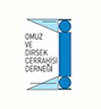ANKLE ARTHROSCOPY
Ankle arthroscopy is a minimally invasive surgical procedure in which an arthroscope, a small, soft, flexible tube with a light and video camera at the end, is inserted into the ankle joint to evaluate and treat a variety of conditions.
An arthroscope is a small, fibre-optic instrument consisting of a lens, light source, and video camera. The camera projects an image of the inside of the joint onto a large screen monitor allowing the surgeon to look for any damage, assess the type of injury, and repair the problem.
Indications
Ankle Arthroscopy, also referred to as keyhole surgery or minimally invasive surgery, has proved to be highly effective in managing various ankle disorders including ankle arthritis, unstable ankle, ankle fracture, osteochondral defects of the talus, infection, and undiagnosed ankle pain.
The benefits of arthroscopy compared to the alternative, open ankle surgery, include:
- Smaller incisions
- Minimal soft tissue trauma
- Less pain
- Faster healing time
- Lower infection rate
- Less scarring
- Earlier mobilization
- Shorter hospital stay
Procedure
Your surgeon will make 2 or 3 small incisions around the ankle joint. Through one of the incisions an arthroscope is inserted. Along with it, a sterile solution is pumped into the joint to expand the joint area and create room for the surgeon to work.
The larger image on the television monitor allows the surgeon to visualize the joint directly to determine the extent of damage so that it can be surgically treated. Surgical instruments will be inserted through the other tiny incisions to assess and treat the problem.
After the surgery, the instruments are removed, and the incisions are closed and covered with a bandage.
Post-surgical care
After the procedure you will be taken to a recovery room. The ankle joint will be immobilized with a splint or cast. The nature and duration of immobilization will depend on the type of repair performed and the preference of the surgeon. The surgical site should be kept clean and dry during the healing process. Patients may be prescribed pain medication for the management of pain. Elevation of the ankle and ice application helps to reduce pain and swelling. Follow your post-operative instructions for the best outcome.
Risks and complications
Ankle arthroscopy is a safe procedure and the incidence of complications is low. However, as with any surgery, risks and complications can occur. Some associated risks with ankle surgery can include infection, damage to blood vessels or nerves, bleeding, and compartment syndrome.
Conclusion
Ankle arthroscopy is a less invasive surgical procedure than traditional open surgery for the management of various ankle disorders. Benefits of arthroscopy include faster healing, less pain, and less complications.
OSTEOCHONDRAL INJURIES OF THE ANKLE
The ankle joint is an articulation of the end of the tibia and fibula (shin bones) with the talus (heel bone). Osteochondral injuries, also called osteochondritis dissecans, are injuries to the talus bone, characterized by damage to the bone as well as the cartilage covering it. Sometimes the lower end of the tibia or shin bone may also be affected.
Osteochondral injuries are most often caused by trauma to the ankle joint, such as with ankle sprains. Some cases may not have any previous history of ankle injury, and may be caused by local osteonecrosis or a metabolic defect.
The predominant symptom of osteochondral injury is pain, which may be localized to the ankle joint. Other symptoms may include tenderness and swelling of the ankle joint with difficulty in weight bearing, locking of the ankle or instability.
Osteochondral injuries are diagnosed by physical examination, X-ray and CT and MRI scans. Plain X-ray images can reveal other fractures, bone spurs and narrowing of the joint. A CT scan helps identify any bony fragments and cysts, but is not very helpful to visualize bone edema or cartilage defects. MRI is the best imaging modality, which helps to visualize the cartilage and bone lesions as well as bone edema.
Treatment
Non-surgical or surgical treatment may be recommended for the management of osteochondral injuries of the ankle joint. Non-surgical treatment with immobilization, restricted weight-bearing and physical therapy may be ordered to help the bone and cartilage to heal, and improve muscle strength, mobility and coordination. Surgical treatment is recommended for more severe injuries and comprises of debridement (removing) of the damaged cartilage and removal of any loose bodies. Some of the most commonly used surgical techniques include microfracture or drilling of the lesion, grafting of cartilage and bone, or fixation of the fragments with the help of screws.
-









 KNEE
KNEE HIP
HIP SHOULDER
SHOULDER SPORT
SPORT TRAUMA
TRAUMA FOOT
FOOT PATIENT FORMS
PATIENT FORMS CONTACT
CONTACT 



